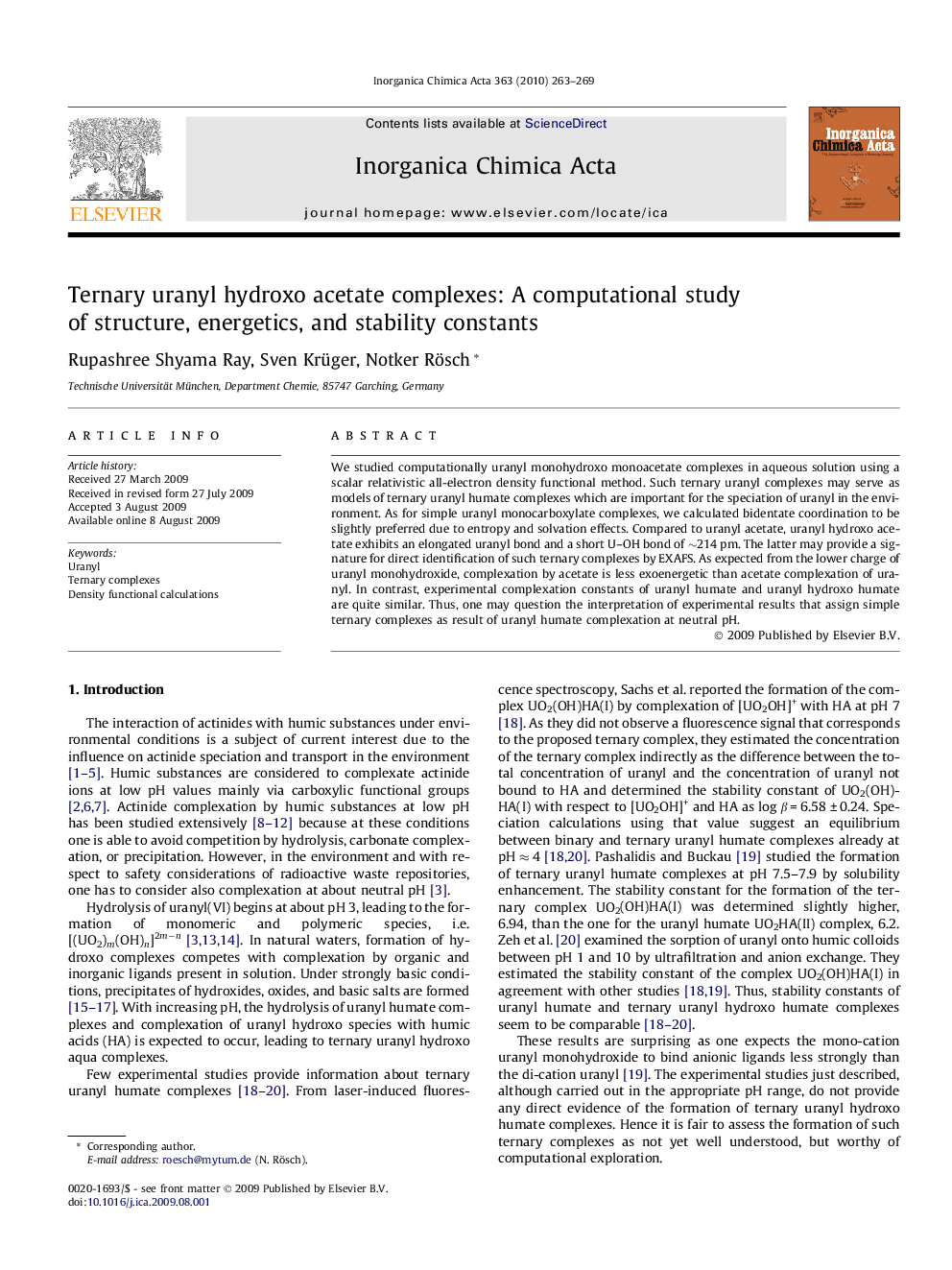| Article ID | Journal | Published Year | Pages | File Type |
|---|---|---|---|---|
| 1311324 | Inorganica Chimica Acta | 2010 | 7 Pages |
We studied computationally uranyl monohydroxo monoacetate complexes in aqueous solution using a scalar relativistic all-electron density functional method. Such ternary uranyl complexes may serve as models of ternary uranyl humate complexes which are important for the speciation of uranyl in the environment. As for simple uranyl monocarboxylate complexes, we calculated bidentate coordination to be slightly preferred due to entropy and solvation effects. Compared to uranyl acetate, uranyl hydroxo acetate exhibits an elongated uranyl bond and a short U–OH bond of ∼214 pm. The latter may provide a signature for direct identification of such ternary complexes by EXAFS. As expected from the lower charge of uranyl monohydroxide, complexation by acetate is less exoenergetic than acetate complexation of uranyl. In contrast, experimental complexation constants of uranyl humate and uranyl hydroxo humate are quite similar. Thus, one may question the interpretation of experimental results that assign simple ternary complexes as result of uranyl humate complexation at neutral pH.
Graphical abstractDFT calculations on ternary uranyl hydroxo acetate complexes in aqueous solution show structural differences to binary uranyl acetate complexes which may be useful for experimental identification. Energetic considerations and estimated complexation constants indicate that ternary hydroxo acetate complexes [UO2(OH)(OOCCH3)(H2O)n] are less stable than their binary congeners [UO2(OOCCH3)(H2O)n+1], at variance with complexation constants from experiment of the corresponding binary and ternary uranyl humate complexes.Figure optionsDownload full-size imageDownload as PowerPoint slide
